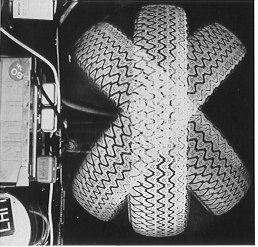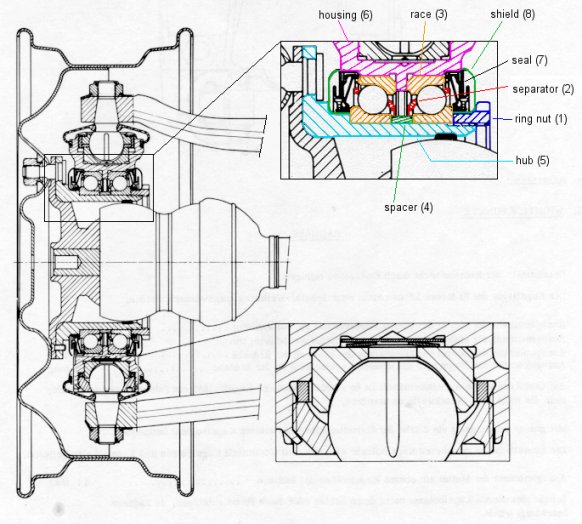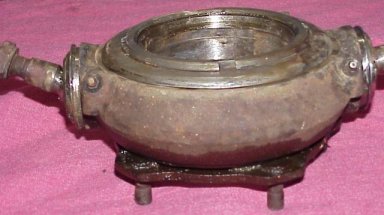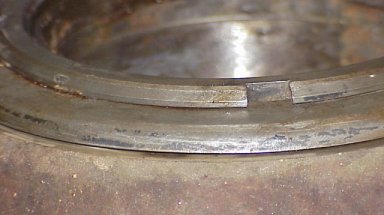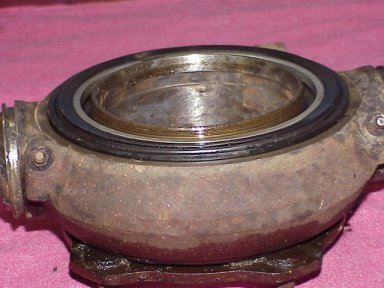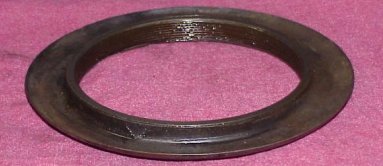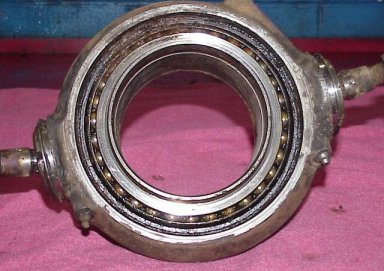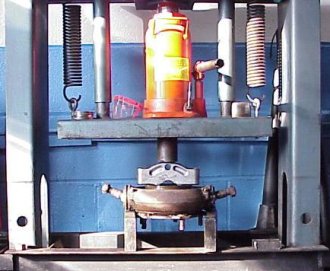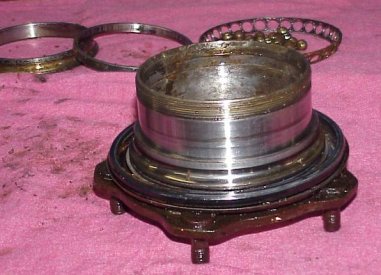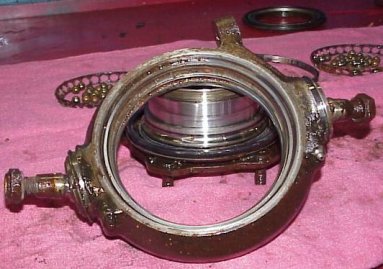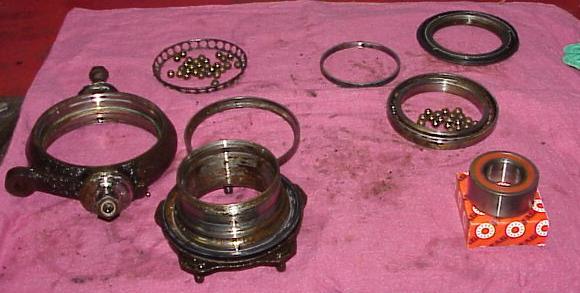The outboard driveshaft universal joint also has a
"bearing" on the wheel hub design :
A tough engineering problem for the early front-wheel-drive engineers was the design of
driveshaft universal joints. CitroŽn had terrible results with the Tracta outboard joints
first used on the Traction Avant, and soon substituted a double Hookes joint similar to
that on our cars. A problem with the double Hookes joint is that due to its length,
stresses on the joint rise dramatically when operated at high angles as the joint is moved
inward from the kingpin. In a car such as a Traction or a Panhard, the joint can be seen
to move forward and back as the steering is turned. The joint works best if its center
(that is, the guide ball between the two cross-arms) is quite near the kingpin line. I
believe this is the problem CitroŽn solved by placing the outboard joint within the wheel
bearing.
The idea of mounting a universal joint within a wheel bearing was not unique to CitroŽn.
Vittorio Jano's Lancia Aurelia, a contemporary of the DS19, used a similar design. But the
Lancia used it at the rear; CitroŽn's front-drive design was far more ambitious.
Modern Rzeppa joints, now almost "universal" on modern front-drive cars, are
much more compact and can be mounted inboard of the wheel bearing without problem.
The pictures below show a pivot assembly being disassembled step by step. |
